Assembly of proteins to postsynaptic densities after transient cerebral ischemia
- PMID: 9425004
- PMCID: PMC6792532
- DOI: 10.1523/JNEUROSCI.18-02-00625.1998
Assembly of proteins to postsynaptic densities after transient cerebral ischemia
Abstract
Transient ischemia leads to changes in synaptic efficacy and results in selective neuronal damage during the postischemic phase, although the mechanisms are not fully understood. The protein composition and ultrastructure of postsynaptic densities (PSDs) were studied by using a rat transient ischemic model. We found that a brief ischemic episode induced a marked accumulation in PSDs of the protein assembly ATPases, N-ethylmaleimide-sensitive fusion protein, and heat-shock cognate protein-70 as well as the BDNF receptor (trkB) and protein kinases, as determined by protein microsequencing. The changes in PSD composition were accompanied by a 2.5-fold increase in the yield of PSD protein relative to controls. Biochemical modification of PSDs correlated well with an increase in PSD thickness observed in vivo by electron microscopy. We conclude that a brief ischemic episode modifies the molecular composition and ultrastructure of synapses by assembly of proteins to the postsynaptic density, which may underlie observed changes in synaptic function and selective neuronal damage.
Figures
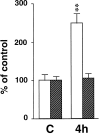
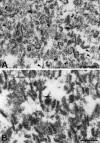
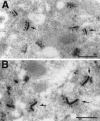
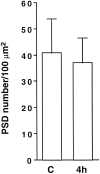
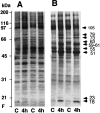



References
-
- Acharya U, Jacobs R, Peters JM, Watson N, Farquhar MG, Malhotra V. The formation of Golgi stacks from vesiculated Golgi membranes requires two distinct fusion events. Cell. 1995;82:895–904. - PubMed
-
- Andiné P, Jacobson I, Hagberg H. Enhanced calcium uptake by CA1 pyramidal cell dendrites in the post-ischemic phase despite subnormal evoked field potentials: excitatory amino acid receptor dependency and relationship to neuronal damage. J Cereb Blood Flow Metab. 1992;12:773–783. - PubMed
-
- Aronowski J, Grotta JC, Waxham MN. Ischemia-induced translocation of Ca2+/calmodulin-dependent protein kinase II: potential role in neuronal damage. J Neurochem. 1992;58:1743–1753. - PubMed
-
- Bloom FE, Aghajanian GK. Cytochemistry of synapses: a selective staining method for electron microscopy. Science. 1966;154:1575–1577. - PubMed
-
- Bloom FE, Aghajanian GK. Fine structural and cytochemical analysis of staining of synaptic junctions with phosphotungstic acid. J Ultrastruct Res. 1968;22:361–375. - PubMed
Publication types
MeSH terms
Substances
Grants and funding
LinkOut - more resources
Full Text Sources
Medical
